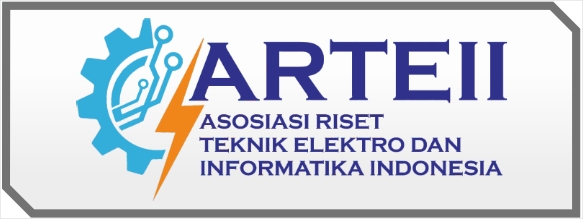Applying Ai Techniques To Analyze Soil Data And Improve Foundation Design In Construction In Iraq
DOI:
https://doi.org/10.59581/jkts-widyakarya.v2i3.3769Keywords:
Machine learning, neural network, svm, soil, Iraq, al NasiriyahAbstract
In geotechnical engineering, building robust structures is crucial to ensure the bearing capacity of structures against external forces, so making sure soil strength and unreliable build cost and duration prediction are also very important and preliminary aspects of any construction project. Therefore, in this first-of-its-kind modern examine, the capability of various artificially intelligent (AI)-based models toward reliable forecasting and estimation of preliminary construction expenses, duration, and strength at shear is explored. First, background information about the revolutionary artificial intelligence (AI) technique along with its many distinct models ideal for geotechnical and building engineering problems is presented, The use of AI-based models in the literature for the aforementioned construction and maintenance applications is discussed in a number of current works, together with their benefits, drawbacks, and future directions. Several important input elements that significantly affect the preliminary price of construction, construction time, and soil's shear strength estimation are listed and given through analysis. Finally, some obstacles to employing AI-based models for precise forecasts in these applications are discussed, along with elements influencing the problems with cost overruns. Thus, this work can help civil engineers make effective use of artificial intelligence (AI) to solve difficult and risky tasks. It can also be used to Internet of Things (IoT) environments for self-learning applications like smart architectural health-monitoring systems
References
Antoniou, A. A., Papadimitriou, A. G., & Tsiambaos, G. (2008). A geographical information system managing geotechnical data for Athens (Greece) and its use for automated seismic microzonation. Natural Hazards, 47(2), 369–395.
Cabalar, A. F., Canbolat, A., Akbulut, N., Tercan, S. H., & Isik, H. (2019). Soil liquefaction potential in Kahramanmaras, Turkey. Geomorphology and Natural Hazards, 10(4), 1822–1838.
Mancini, F., Stecchi, F., & Gabbianelli, G. (2009). GIS-based assessment of risk due to salt mining activities at Tuzla (Bosnia and Herzegovina). Engineering Geology, 109(1-2), 170–182.
Naji, D. M., Akin, M. K., & Cabalar, A. F. (2020). A comparative study on the VS30 and N30 based seismic site classification in Kahramanmaras, Turkey. Advances in Civil Engineering, 2020, Article 1-5.
ESRI Environmental Systems Research Institute. (2005). Retrieved February 10, 2022, from https://www.esri.com/
Arnous, M. O. (2013). Geotechnical site investigations for possible urban extensions at Suez City, Egypt using GIS. Arabian Journal of Geosciences, 6(4), 1349–1369.
Chao, Z., Ma, G., Zhang, Y., Zhu, Y., & Hu, H. (2018). The application of artificial neural network in geotechnical engineering. In G. Smith (Ed.), IOP Conference Series: Earth and Environmental Science (Vol. 189, p. 022054). Bristol, UK: IOP Publishing.
Sulewska, M. J. (2017). Applying artificial neural networks for analysis of geotechnical problems. Computer Assisted Methods in Engineering and Science, 18, 231–241.
Nugroho, S. A., Fernando, H., & Suryanita, R. (2022). Estimation of standard penetration test value on cohesive soil using artificial neural network without data normalization. International Journal of Artificial Intelligence, 2252(8938).
Cabalar, A. F., & Akbulut, N. (2016). Evaluation of Actual and Estimated Hydraulic Conductivity of Sands with Different Gradation and Shape. In SpringerPlus (Vol. 5, pp. 1–6). Berlin/Heidelberg, Germany: Springer.
Player, R. S. (2006). Geographic information system (GIS) use in geotechnical engineering. In Proceedings of the GeoCongress 2006: Geotechnical Engineering in the Information Technology Age, Atlanta, GA, USA (pp. 1–6).
Ahmed, C., Mohammed, A., & Saboonchi, A. (2022). ArcGIS mapping, characterisations and modelling the physical and mechanical properties of the Sulaimani City soils, Kurdistan Region, Iraq. Geomechanics and Geoengineering, 17(5), 384–397.
Wan-Mohamad, W. N., & Abdul-Ghani, A. N. (2011). The use of geographic information system (GIS) for geotechnical data processing and presentation. Procedia Engineering, 20, 397–406.
Johora, F. T., Hickey, C. J., & Yasarer, H. (2022). Predicting geotechnical parameters from seismic wave velocity using artificial neural networks. Applied Sciences, 12(23), 12815.
Mermerdaş, K., & Arbili, M. M. (2015). Explicit formulation of drying and autogenous shrinkage of concretes with binary and ternary blends of silica fume and fly ash. Construction and Building Materials, 94, 371–379.
Arbili, M. M., Ghaffoori, F. K., & Mermerdaş, K. (2016). Statistical analysis of the performance of the soft computing based prediction model for shrinkage of concrete including mineral admixtures. ZANCO Journal of Pure and Applied Sciences, 28(4), 574–579.
Ghoreishi, B., Khaleghi Esfahani, M., Alizadeh Lushabi, N., Amini, O., Aghamolaie, I., Hashim, N. A., & Alizadeh, S. M. (2021). Assessment of geotechnical properties and determination of shear strength parameters. Geotechnical and Geological Engineering, 39(1), 461–478.
Hameed, H. (2013). Water Harvesting in Erbil Governorate, Kurdistan Region, Iraq: Detection of Suitable Sites Using Geographic Information System and Remote Sensing. Master's Thesis, Lund University. Lund, Sweden.
Jassim, S. Z., & Goff, J. C. (2006). Geology of Iraq. Dolin. Brno, Czech Republic: Prague and Moravian Museum.
Al-Sanjari, M. N., & Al-Tamimi, M. A. (2009). Interpretation of water quality parameters for Tigris River within Mosul City by using principal components analysis. Tikrit Journal of Pure Science, 14(1), 68–74.
Das, B. M., & Sivakugan, N. (2018). Principles of Foundation Engineering. Belmont, CA: Cengage Learning.
Dauji, S., & Rafi, A. (2021). Spatial interpolation of SPT with artificial neural network. Engineering Journal, 25, 109–120.
Jasim, M. M., Al-Khaddar, R. M., & Al-Rumaithi, A. (2019). Prediction of bearing capacity, angle of internal friction, cohesion, and plasticity index using ANN (case study of Baghdad, Iraq). International Journal of Civil Engineering and Technology, 10(8), 2670–2679.
Hasan, A. M., Mawlood, Y., Ahmed, A. A., & Ibrahim, H. (2020). Correlation of shear wave velocity with SPT-N for a Tower-Building Site at Erbil City. Journal of Duhok University, 23(1), 235–245.
Likos, W. J., Song, X., Xiao, M., Cerato, A., & Lu, N. (2019). Fundamental challenges in unsaturated soil mechanics. Geotechnical Fundamentals: Addressing New World Challenges, 209–236.
Downloads
Published
How to Cite
Issue
Section
License
Copyright (c) 2024 Jurnal Kendali Teknik dan Sains

This work is licensed under a Creative Commons Attribution-ShareAlike 4.0 International License.













